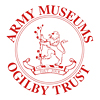
Photograph of James by kind permission of ashtonpals.webs.com

(L to R) 1914-15 Star; British War Medal; Allied Victory Medal
James was born between April and June 1895 in Ashton-under-Lyne, Lancashire. His father was called Moses and his mother was Ada. He had one sister, Ellen, who was 13 years younger than him. Moses worked as a cotton machine minder in one of Ashton's many mills. In 1901 the family lived at 56 Hertford Street.
As he grew up, James had attended Trafalgar Square Day School, and the Moravian Sunday School. He was also a member of the Wycliffe Church Boy's Brigade in Dukinfield. He was 'a finely built young fellow, and took an interest in athletics and sports. He was considered to be a skilful lightweight boxer and ... he was known as "Kid James"' to his fellow boxers'. He had fought in Ashton and in Stalybridge.
By 1911 the family had moved to 218 Park Road in nearby Dukinfield in Cheshire. Moses had the same job, and James had begun to work as a cotton piecer. They were still here on the 19th May 1914 when James joined the Army.
James joined the 9th Battalion of the Manchester Regiment. This was a unit of the Territorial Force, so he kept his civilian home and job and trained as a soldier during evenings and weekends. He now worked as a labourer at Sandy Vale Bleach Works.
James was given the service number 1957 by the 9th Battalion. He was 5 feet 5 inches tall with 'good' vision and physical development.
Oddly, James' enlistment papers are labelled 'Territorial Force Reserve'. This force was intended for men who had finished their term of service in the Territorial Force, but were willing to be recalled in an emergency. James however had never been in the Army before.
The First World War broke out that August and James was called into service. He was a member of D Company at the time. The 9th Battalion went into camp on Chesham Road in Bury on the 20th August, then moved to Southampton and sailed to Egypt on the 9th September. James did not go with them.
The 9th Battalion took part in the landings in Gallipoli in early May 1915. James joined them shortly before this operation began. He joined B Company. At some point during the campaign he was promoted to Lance Corporal.
We don't know much about James' time in Gallipoli. On the 4th June the British launched a large attack on the village of Krithia. The 9th Battalion took part in this attack, so it is likely that James was involved in this fighting.
Even out of the front lines, Gallipoli was a dangerous place. Poor hygiene and sanitation meant that disease was a constant threat. In late June or early July James was taken ill with 'dysentery and pains in the stomach'. He was admitted to hospital for treatment.
Later in July James was discharged from hospital. He then wrote a letter home to Moses and Ada. He told them he was in 'bad health', however he also told them not to 'upset themselves over him, and hoped to be better by the time they received his letter'.
The next Moses heard of his son was in a letter from the Army. He had died from enteritis on the 18th July 1915, aged 20. He had died at sea, which suggests he was being evacuated from Gallipoli to a hospital elsewhere aboard a hospital ship when he died.
James has no known grave, so he was most likely buried at sea. He is commemorated on the Helles Memorial in Turkey. James' name can be found between Panel 158 and 170. James' medals were donated to the Museum of the Manchester Regiment in November 1995.




